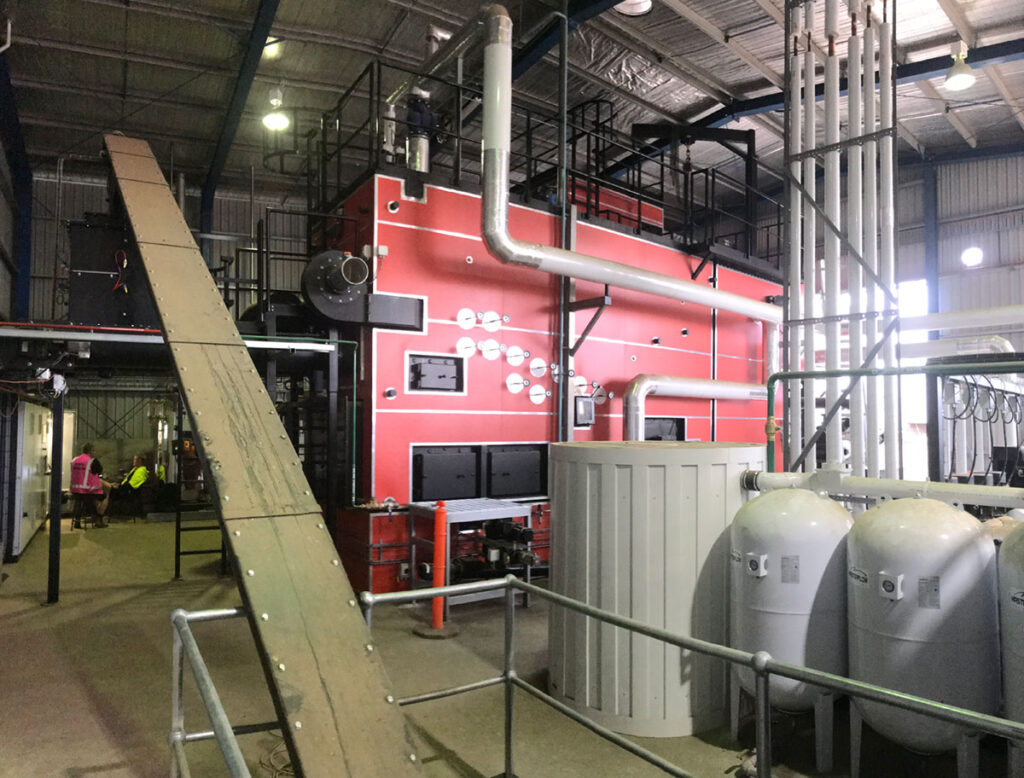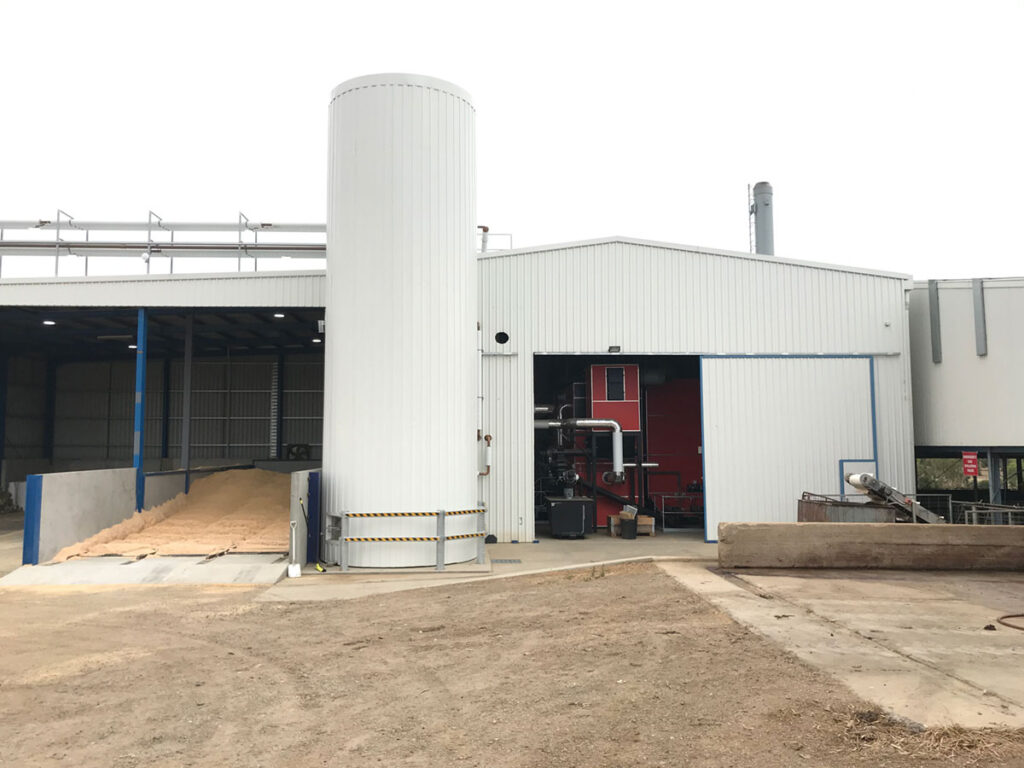Beaufort Hospital
This bioenergy demonstration system was installed at the Beaufort Hospital in 2014. It consists of a containerised 110 kW Hargassner boiler system installed by Living Energy from New Zealand (see photo opposite). The 12.0 metre shipping container acts as a boiler house and includes a fuel store and filling system.
The boiler uses woodchips from the local sawmill as fuel and provides most of the hospital’s heating load previously delivered by an LPG system. The existing LPG boilers were retained as backup and to cover peak loads.
The total installation cost was $428,937 and in the first 12 months of operation it reduced expenditure on LPG by around $44,000 per year with overall heating costs being reduced by $27,000 per year.
The container is accessible by the public via Walker Street and the boiler and fuel storage can be seen through the viewing windows. This boiler has performed so well that Beaufort and Skipton Health are now installing a similar system at the Skipton Hospital which will use locally produced straw pellets as fuel. These bioenergy systems not only reduce operating costs for these small regional hospitals, they also reduce CO2 emissions and help create local jobs.
For more information on the project visit: https://www.pyrenees.vic.gov.au/Residents/Environment/Regional-Energy-Project

Beaufort Hospital 110 kW Hargassner Boiler with control panel, ash container & fuel feed 
Completed boiler installation at Beaufort Hospital
Meredith Dairy
In 2016, Meredith Dairy installed a biomass heating system to reduce LPG use for heating the large amount of hot water the dairy uses daily. The owners of the dairy wanted to make their business as environmentally friendly as possible and reduce greenhouse gas emissions.
They chose Dragon NRG to install a 240 kW Moderator woodchip fuelled boiler system, built in Poland. The system consisted of the boiler, fuel storage, storage filling system and 20,000 litre buffer tank. Fuel for the system was initially supplied by Pyrenees Timber, but is now composed of timber construction waste (diverted from landfill) and chipped trees from the owner’s property. An LPG steam boiler was also installed to provide supplementary heating during peak loads.
Although there were initial problems with the fuel feed system and fuel contamination, these were overcome and the boiler has operated successfully since; significantly reducing both energy costs and CO2 emission for the dairy.
The boiler is now the main source of heat for the site, running continuously to provide approximately 70% of the site’s heating load and saving the business more than $50,000 annually. The dairy will soon be installing additional tank storage to assist with peak usage times, completely eliminating LPG during normal operation and increasing savings to almost $80,000 annually.
Images courtesy of Dragon.
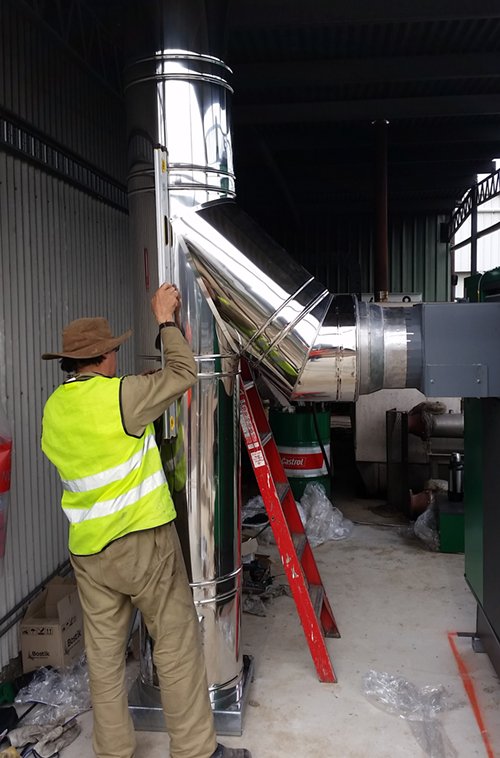
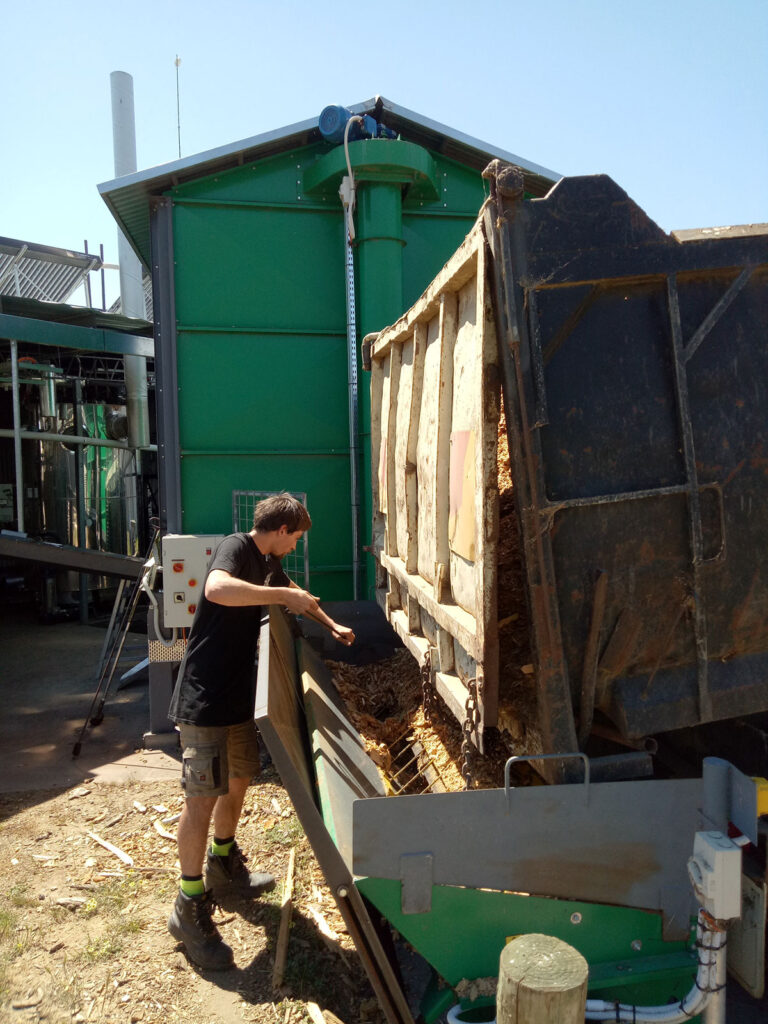
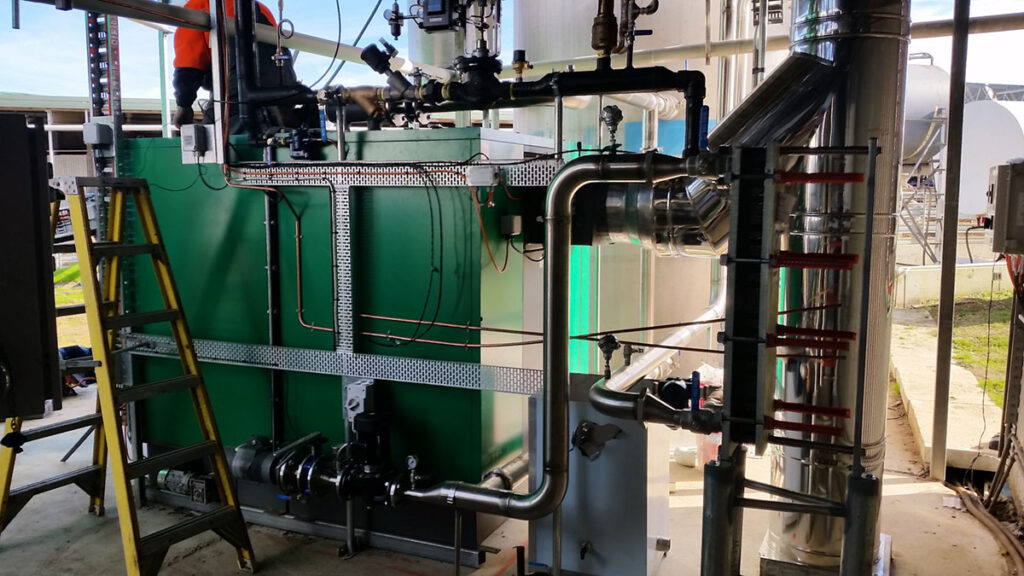
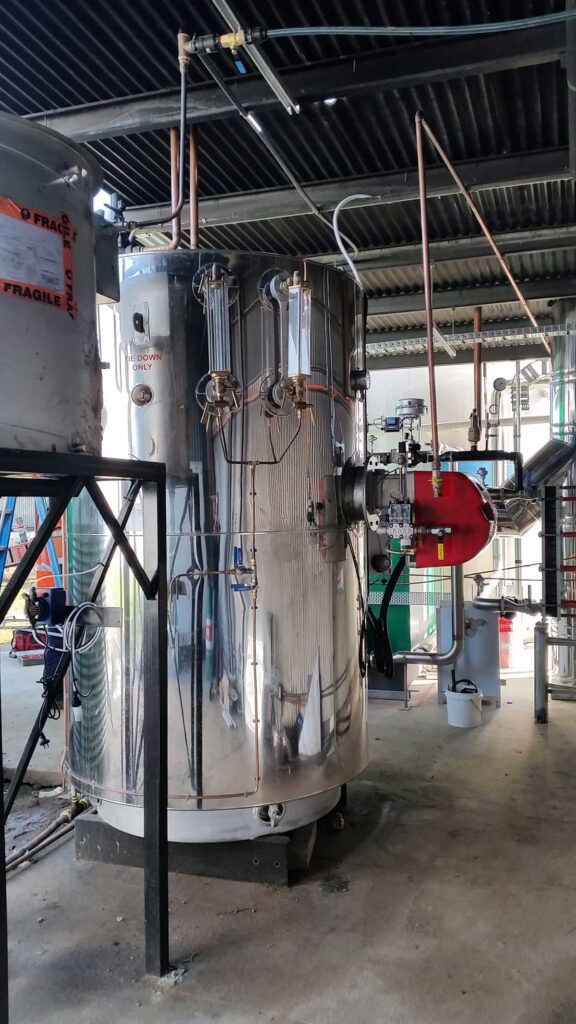
Unigrain
Unigrain, Smeaton, is an oat processing facility selling their oats into the Australian food sector. During processing, the oat hulls are separated and end up as a by-product. These hulls are an excellent biomass fuel.
The fact that Unigrain are generating a biofuel as part of their manufacturing process, combined with the use of natural gas in the plant, means that utilising oat hulls is both the most economical way to make the process heat that they require as well as a way to produce that heat with near-zero carbon emissions.
Location: Smeaton, VIC
Feedstock: Oat Hulls
Type of energy produced: Process steam
Energy output (kW or MW/ ML per year): 3MWth
Frew Group
As a regional food processor competing in a global market, Frew has been innovative and pro-active in keeping their cost of production as low as possible so they can be as competitive as possible in that market.
Like all regional manufacturers their cost of energy was significantly higher than other facilities located in metropolitan areas. So Frew worked with Justsen Pacific to implement a biomass boiler project to replace their natural gas boiler, thus slashing both their carbon emissions and the cost of generating the heat that their manufacturing processes require.
Location: Stawell, VIC
Feedstock: Plantation timber sawdust
Type of energy produced: Process hot water
Energy output (kW or MW/ ML per year): 3MWth


